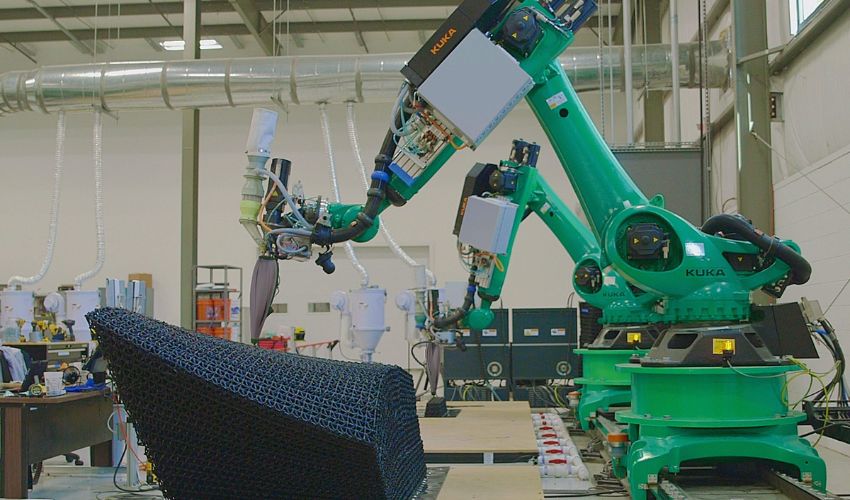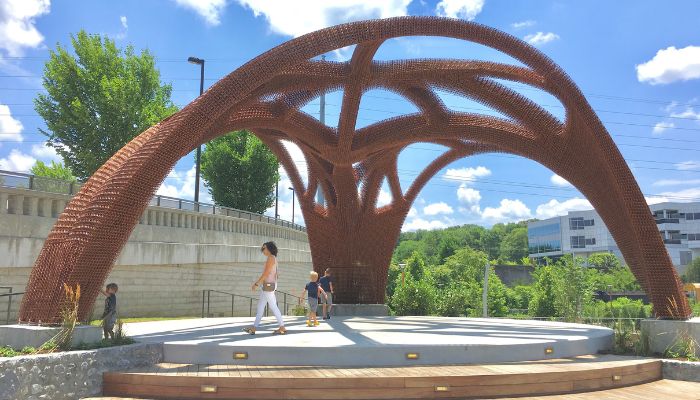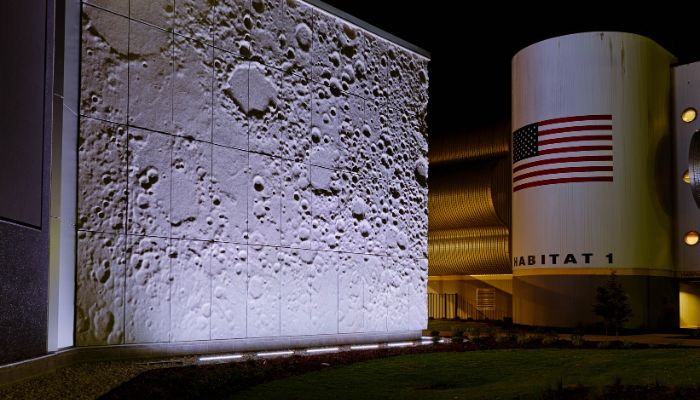Branch Technology on 3D Printing Construction Technology That Is IBC Compliant

Over the past few years, 3D printing has increasingly become one of the strongest allies for the construction sector. Indeed, additive manufacturing opens up a wide range of possibilities for architecture, making it possible to imagine forms that are much more difficult to think of and carry out using traditional methods, as well as enabling the use of very diverse materials and very interesting technologies for the creation of prototypes, parts or buildings. To learn more about one new project, we sat down with David Goodloe, a worker on the Advanced Concepts Team (ACT) at Branch Technology, a 3D printing construction technology company which notably has the benefit of being IBC (International Building Code) compliant.
3DN: Could you introduce yourself and tell us about your relationship to 3D printing?

My name is David Goodloe and I work on the Advanced Concepts Team (ACT) at Branch Technology. My background is in physics and I’m currently pursuing an MBA at Vanderbilt University while working for Branch. My exposure to 3D technologies first occurred while studying physics during my undergraduate career. One of my classmates worked on a 3D printing technology at NASA for an internship. I then sought out a job with Branch Technology immediately after graduation. The ACT is the portion of our business dedicated to advancing cutting-edge applications of our Cellular Fabrication (C-Fab®) technology, typically through funded R&D projects with government or enterprise partners. I have the privilege of managing our projects with the likes of NASA, the US Air Force, the National Science Foundation, and other innovative organizations.
3DN: What is Branch Technology? How did you come up with the idea of creating it?
Our founder and Chief Innovation Officer, Platt Boyd, founded the company while practicing as an architect. He was frustrated with the design constraints imposed by traditional construction methods. Fascinated by how nature creates form and structure, and impressed with the geometric customization capabilities of emerging 3D printing technologies, Platt left his architecture firm to invent Branch’s Freeform 3D printing technology and Cellular Fabrication. He founded the company and has grown it to a team of 30 humans and 18 robots.
Branch Technology is a construction technology firm focused on creating solutions in the built environment and construction industry using its direct digital manufacturing, 3D design and fabrication, and prefabrication technologies. The team works in many industries, but primarily focuses on commercial construction and building envelopes. Other industries served include large scale 3D art and sculptures, furniture manufacturing, prefabricated shelters, and applied 3D printing research and development.

In the commercial construction space, Branch provides design services as well as 3D facade and building-enclosure products, primarily focused on commercial building rainscreens and facades. The company’s product line in this space, called BranchClad™️, serves as a Freeform architectural cladding for commercial buildings. The team has produced the world’s largest 3D printed facades with this product line.
In other spaces, Branch is capable of producing prefabricated shelters with its 3D printing technology to accommodate homelessness, natural disaster relief, refugee or housing crises, and other scenarios where rapidly deployable shelters are needed. In addition, the company produces large structural art and sculptures, as well as engages with furniture manufacturers to create lightweight frames for upholstered pieces. Finally, the company is also engaged in applied research with the likes of NASA, the USAF, and the NSF to apply its C-Fab® technology to challenges like 3D printing habitats on the moon, retrofitting buildings for energy efficiency, utilizing in-situ materials, reducing carbon emissions in the built environment, and more.
3DN: What are the benefits of using the technology? What about limitations?
C-Fab® is a direct digital manufacturing process capable of mass customization. Its nature as a 3D printing process ensures geometric design freedom, while its lightweight and material-efficient “Freeform” 3D capability enables an incredible strength-to-weight ratio. The integration of other functional materials also means the Branch’s wall assemblies are multifunctional, embedding design, structure, impermeability, insulation, fire resistance, and finished surface into one product.
As a prefabrication approach, the manufacturing is extremely efficient, fast, safe, and minimizes waste compared to on-site traditional construction practices. And finally, all of Branch’s products have been tested to compliance with International Building Code (IBC). For example, BranchClad(^TM) passes NFPA 285 for flame propagation of an exterior wall assembly – the flagship fire resistance test for exterior building products. To our knowledge, no other 3D printing company in the world has multiple IBC-compliant commercial construction product systems.
3DN: Where do you see additive manufacturing in the next few years?
Additive manufacturing will address many challenges in the built environment. The industry is already seeing adoption of residential concrete 3D printing, but little adoption of additive products has yet occurred in commercial construction. We believe the reason for this is the limiting form factor of on-site, gantry-style 3D printers used for single-family residential buildings. In order to become scalable to the construction industry at large, a new approach is needed.
Fifty years ago, the automotive industry adopted tenets of prefabrication, automation, and manufacturing to revolutionize the auto industry. Branch wants to enable the same transition in construction. Our technology is the first-ever combination of prefabrication and additive manufacturing at construction scale. Our technology can scale up to produce product for buildings from the size of a small house to the size of an enormous skyscraper. The incredible scalability of this approach is why I am bullish on our company’s future leading the way for adoption of additive manufacturing in construction beyond the residential sector.

3DN: Any last words for our readers?
If you want to learn more about our company, visit our website HERE. Also, for a deeper dive into our process, there is a video series on our technology on our YouTube channel, linked HERE. Finally, please reach out to us on our website if you have ideas for collaboration.
What do you think of our interview with Branch Technology about 3D printing in the construction world? Let us know in a comment below or on our LinkedIn, Facebook, and Twitter pages! Don’t forget to sign up for our free weekly Newsletter here, the latest 3D printing news straight to your inbox! You can also find all our videos on our YouTube channel.
*All Photo Credits: Branch Technology








interessant
Branch Technology is revolutionizing construction with 3D printing, creating IBC-compliant structures. Their C-Fab technology enables mass customization, geometric design freedom, and efficient manufacturing. This innovative approach to construction technology is set to transform the construction industry.